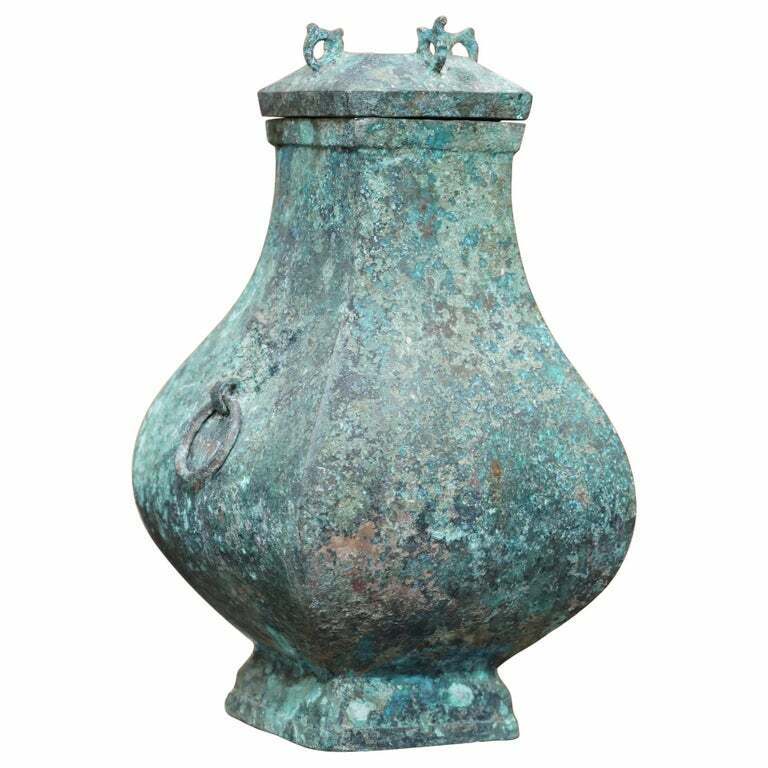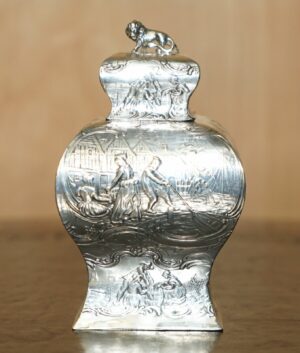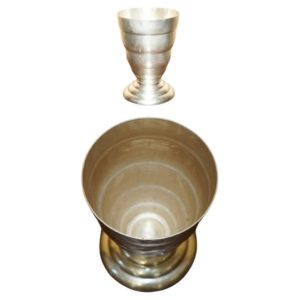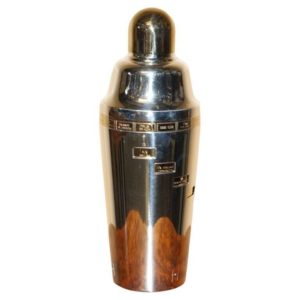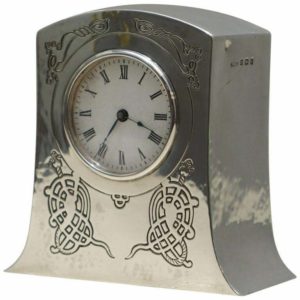Select Category
- All Tables
- Bedroom
- Bookcase
- Campaign Furniture
- Chesterfield Seating
- Cupboards
- Decorative Pieces
- Designer Brand Furniture
- Desks
- Dining Room
- Dining Tables
- Drawers
- Everything Else!
- Fine Furniture
- Fully Restored
- Gillows of Lancaster & London
- Howard & Son’s
- Jewellery & Watches
- Lighting
- Mirrors & Pictures
- Other
- Precious Metals
- Seating
- Sideboards
- Statues Sculptures & Art
FANGHU HAN DYNASTY 206BC – 220AD CHINESE BRONZE RITUAL WINE VESSEL JUG & COVER
£20,000.00
1 in stock
Payment options accepted

Description
Royal House Antiques
Royal House Antiques is delighted to offer for sale this exceptionally important and highly collectable museum quality original Chinese bronze ritual wine vessel and cover, Fanghu Han Dynasty 206BC – 220AD with Taotie mask handles – olive green and russet patina with specks of malachite encrustation.
The quadrangular wine jar is raised on a high pyramidal foot. Two sides of the vessel are embellished with a crisply cast taotie-mask, through the nose of which a movable ring is placed. The mouth rim is accentuated with a narrow-raised band. The square cover has a flat top, and each side is applied with a bird-form finial that convert to supports when the cover is inverted. The vase has an attractive olive-green and russet patina and has some bright specks of malachite encrustation. The patina and encrustation enhance the beauty of the vase and make it interesting to look at: each side has its own appearance.
The taotie-mask is one of the most distinctive and characteristic images in Chinese art, originating from Shang ritual bronzes and becoming a much-used decoration in later dynasties: not only in bronze but also on other art-forms such as porcelain. The primary attribute of this frontal animal-like mask is a prominent pair of eyes, often protruding in high relief. Between the eyes is a nose, often with nostrils at the base. Taotie can also include jaws and fangs, horns, ears, and eyebrows. Many versions include a split animal-like body with legs and tail, each flank shown in profile on either side of the mask. While following a general form, the appearance and specific components of taotie masks varied by period and place of production. It is thought that the taotie is a protective symbol. It is likely that the present fanghu is applied with these masks to protect the deceased in his grave and on his journey to the spirit world.
In terms of the condition its exactly as you would expect to find a piece 1800-2200 years old that has spent hundreds of years buried, there is one small loss to the top, otherwise it is a sublime museum quality example.
Dimensions
Height:- 35cm
Width:- 18.5cm
Depth:- 19.5cm
Please note all measurements are taken at the widest point, if you would like any additional or specific measurements please ask.
Chinese bronzes
In China bronzes first appeared in the Erlitou Culture (circa 2100-1600 BC), mainly in the form of libation vessels, jue, yet in the glorious days of the Bronze Age, during the Shang (circa 1700-1050 BC) and Zhou (1050-221 BC) dynasties, the quality of the casting of bronze was at its height. Not only bronze weapons were made with which the Shang and Zhou controlled peoples around them, but also much attention was paid by casters and their patrons to vessels in which food and wine were offered to ancestors. Most of these bronzes may be described as ritual vessels intended for the worship of ancestors, who are often named in inscriptions on the bronzes. These ritual vessels of ancient China represent possibly the most remarkable achievement in the whole history of metalcraft before modern times.
Bronze vases should not be considered individually but in groups as ritual sets. These sets are defined as the range of vessel types required for the correct performance of rituals. The combination of these vessels can be inferred from two sources – intact tomb groups and vessels that share a common dedication. From the arrangement and quantity of bronzes displayed in a given ceremony, one can discern the specific social status and position of that noble host. In the case of vessels interred in tombs it seems likely that the occupant of the tomb was expected to continue to offer sacrifices to his ancestors after his death and that vessels were buried for this purpose, even though he had become an ancestor himself. It is also possible that they were used at funerary rites. Besides their use in ancestral worship, rites of spirit worship and as symbols of status and power, bronzes could, it was believed, when buried with the deceased, continue to serve in the afterlife. As some aristocrats and all commoners at the time could not afford the expense of bronzes, frequently complete sets of ritual vessels were made in fired pottery.
In the Shang dynasty (circa 1600–1046 BC), the right to cast or possess these vessels was probably confined to the royal house itself but later was bestowed upon local governors set up by the ruler; still later, in the Zhou dynasty (1045–256 BC), the right was claimed by rulers of the feudal states and indeed by anyone who was rich and powerful enough to cast his own vessels. Under the ultimate unification of Qin and Han, Chinese bronzes gradually yielded its central role in the ritual system but transformed into a cultural archetype.
Shapes
Although there are many different shapes in Chinese bronze ritual vessels, they can be reduced to a few essential types used for the ritual of ancestor worship. Vessels were required in which to cook and serve the dishes, to preserve and hold the wine for drinking, and to contain and pour water. They can most simply be grouped according to their use in sacrifices.
Hu: A round-bellied vase or a jar with a cover
You: A ritual wine vessel with a stout oval body and an overhead handle, usually with a cover
Zun: Another ritual wine vessel, flared and with a bulbous mid-section
Gu: Also a ritual wine vessel, similar to the zun but with a slender silhouette
Jue: One of the more striking vessels of the archaic ritual bronze assembly — another ritual wine vessel, with a prominent spout, whorl-capped posts, flared tail and long tripod legs
Ding: A ritual cooking vessel with a globular body, tripod legs and a pair of upright handles
Gui: A ritual food vessel with a compressed globular body, raised on a waisted foot, with a pair of loop handles usually decorated with animal heads Square forms: Many of the standard shapes also appear in ‘square’ or fang versions, including the fangzun, fanghu and fangding. Of great significance to the ancient ruling elites, square vessels are much rarer. Square-sectioned vessels have a more formal and regular appearance.
Today, we see the Chinese bronzes in a very different condition from the original. Their long period underground has covered them with a patina, sometimes rough with encrustations and sometimes smooth like jade. They take on all the shades of green. Often, there are russet, purple or blue patches depending on the chemical changes which affected the metal. These alterations only emphasise the beauty of these bronzes.
Any questions please feel free to ask before you bid
ABOUT US
Royal House Antiques is a privately owned family ran business founded in Wimbledon SW19 and now based in Pulborough RH20. We specialise in finding, restoring very fine luxury antique leather seating, along with every single other type of antique ranging from the 16th century to the 20th century. We also stock a number of designer brands such as Fritz Hansen, Ralph Lauren, Cavalli, Charles & Ray Eames, Vitra, David Linley, Rolex, Tiffany, Jager Le Coulter and so on
PAYMENTS
We accept payment via Bitcoin, Bitcoin cash, Ethereum, Bacs, Chaps, PayPal or Card, we would kindly ask that all items are paid for within 48 hours and collected within 7 working days, we can hold all paid items for 14 days free of charge, there after a £20 a week storage fee will apply. We have long term storage which is very economically priced, we are happy to hold stock for as long as needed providing it is arranged prior to the purchase
If sold items aren’t collected within three months and no arrangements have been made for long term storage you will forfeit the item and payment
CONDITION
Please view the very detailed pictures as they form part of the description pertaining to the condition. Please also ask any questions before you bid and not after, all of our items are sold as seen and as listed
Royal House Antiques cannot be held liable for any independent assumptions made regarding the items we sell, if you are unsure on any point, please feel free to ask for clarity
Please note vintage period and original items such as leather seating will always have natural patina in the form of creasing and wear, we recommend annual waxing to ensure no moisture is lost, also hand dyed leather is not recommended to sit in direct sunlight for prolonged periods of time as it will dry out and fade
IMPORT DUTY
Most countries charge some kind of import duty however almost all of our items won’t incur any charges as the items are exempt from tax due to the age and materials used
For European deliveries the price you will be quoted will include all clearance documentation and any customs charges so there won’t be any additional fees
For international deliveries such as the United States there can be some import duty to pay and or a clearance fee, I would estimate that 99% of all deliveries clear customs without being stopped for either
All duties are the responsibility of the purchaser who is the importer, they can’t be covered by the seller or shipping agent or factored in with additional retrospective discounts
RETURNS
Royal House Antiques offers a no quibble return policy if the item is not as described, if there are any issues with the piece you will be refunded in full once the item has been returned and inspected within 14 days, alternatively if there is a small issue, we can discuss finding a mutual resolution that makes all parties happy
We don’t offer a sale on approval service which means you can purchase the item, have it delivered and if you simply don’t like it, return it, this comes under change of mind or doesn’t fit. There is a lot of time, money and work involved in transporting goods around the world, the costs incurred can be vast so my advice would be if you are unsure on a piece please ask as many questions as you like to make sure you understand everything before you buy, if you are still unsure then please either arrange a viewing in person or if that’s not possible then don’t buy from an online retailer, perhaps look for a local gallery instead
Additional information
| Region of Origin | |
|---|---|
| Country of Origin | |
| Product | |
| Age | |
| Primary Material | |
| Antique | |
| Sub-Type | |
| Original/Repro | |
| Chinese Dynasty |
Related products
About Us
Royal House Antiques is a privately-owned family ran company founded in Wimbledon in 2012 by husband and wife James and Iris Thorpe

Usefull information
Contact Us
- Tel: 07850890032
- Email: james-thorpe-2010@hotmail.co.uk
Copyright 2024 Wimbelon-Furniture

